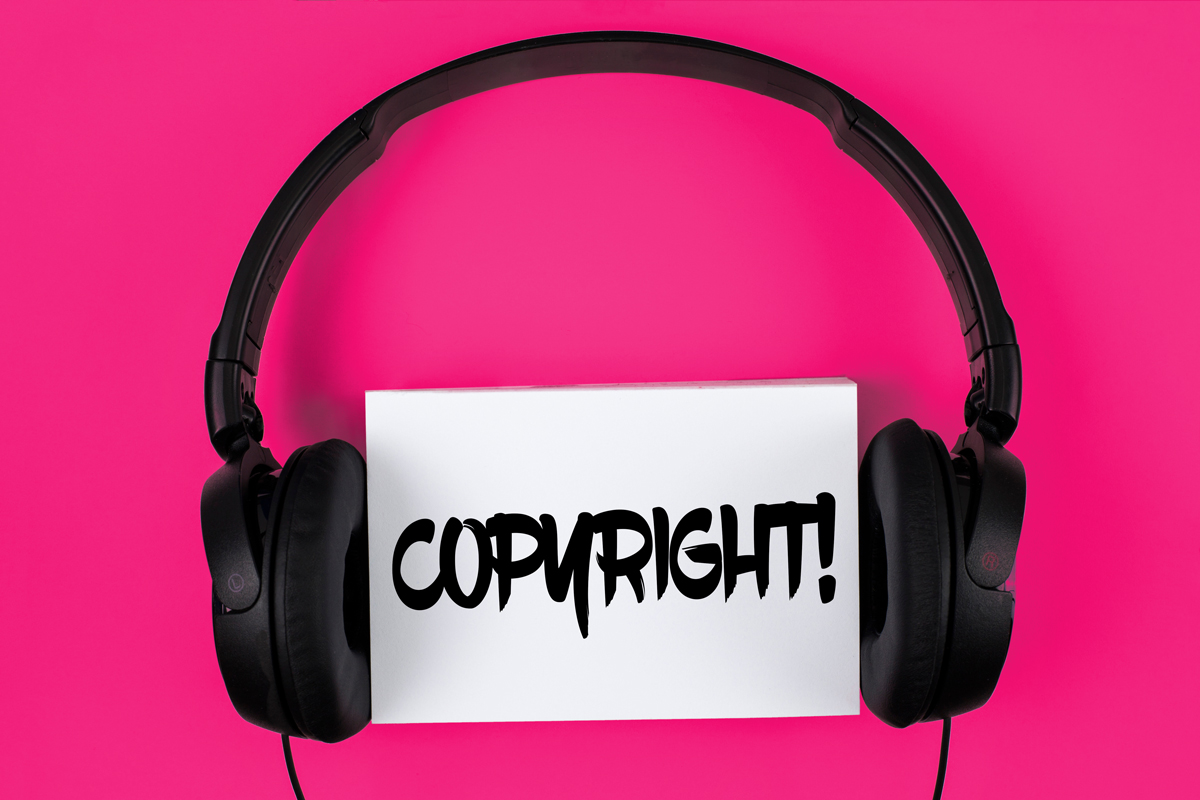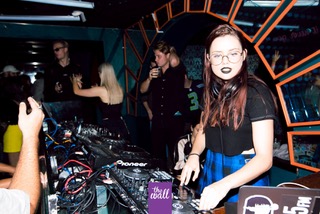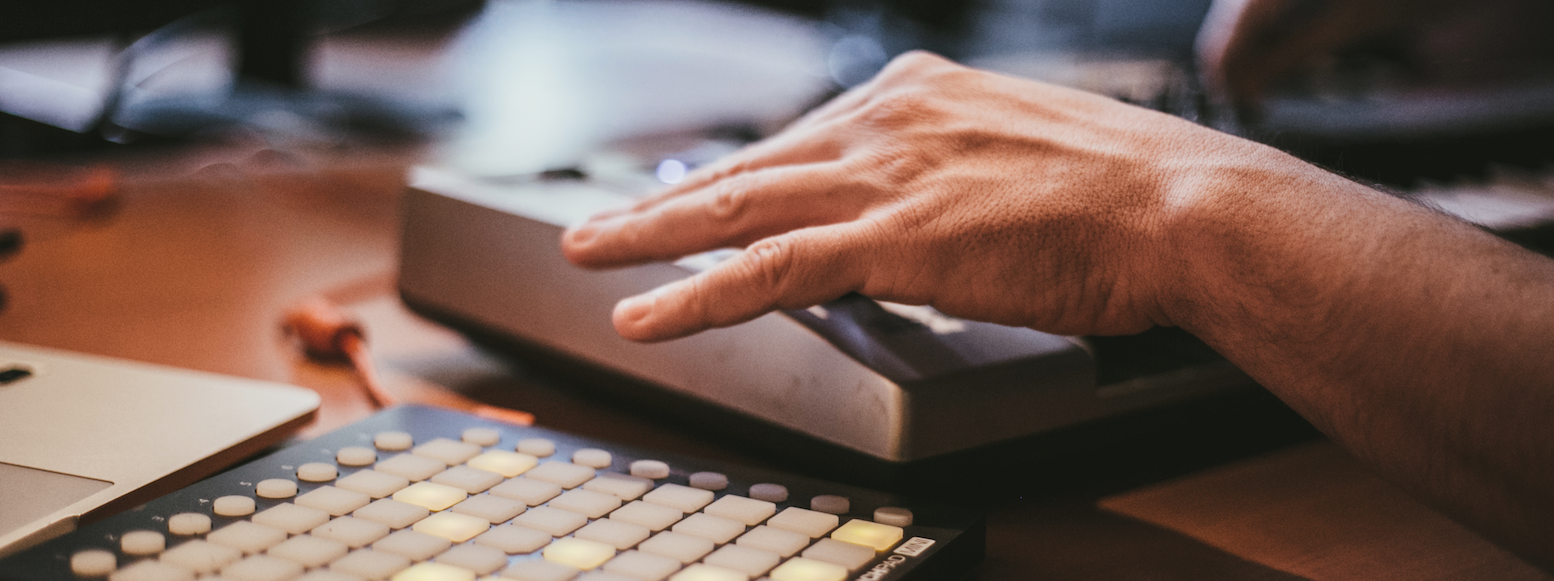What to do if you think your music has been plagiarised

Imagine hearing a track on a playlist that sounds similar to one on your songs… but it’s been released by another artist.
This is what happened to Sydney-based electronic artist and FBi presenter Seduna – aka Alex Hollis. The song in question – released in March 2018 by Berlin producer Digitalluc, entitled ‘Float’ – allegedly shared similar melodic progressions, stylistic use of particular samples and beats to Hollis’ track ‘coy’, released in March 2017.
“I started freaking out, as you would, and my housemate was helping me look for where it was on the internet, and it was absolutely everywhere. I’m talking like ten YouTube videos, Spotify, iTunes, Amazon, Bandcamp, Last FM, Hype Machine, everywhere and anywhere it could possibly be, even Reddit,” she remembers.
“On Spotify there’s been over 600,000 plays. He’s getting money from it on various platforms; he’s had over 50,000 plays, I think, on YouTube. Over 30,000 on SoundCloud and that’s just three right there.
“My original track had 4,000 [plays on SoundCloud] so it’s really easy for someone to find a track that they like and go, ‘Oh this has had no response, it’s been a year, it’s not going anywhere, it’s not going to be picked up.’ [Then] take it and kind of blast it everywhere across the internet and get a bigger response. It was pretty heartbreaking to see something that I’ve worked on all over the internet under someone else’s name.”
From a legal perspective, Andrew Fuller, director of Melbourne-based Clearview Legal Counsel (which specialises in arts, entertainment and media law), highlights that these sorts of infringement claims can be difficult to win.
“It will take an action in the Federal Court to do so. Copyright is infringed when a person uses all, or a ‘substantial part’ of copyright material in one of the ways exclusively controlled by the copyright owner without the permission of the copyright owner.
“A ‘substantial part’ is any important, distinctive or essential part of the original material. It could be two notes – think the Jaws theme – or it could be four bars of music, as in the case of the Men At Work ‘Down Under’ case.”
Hollis believes that it’s from around the 11-second mark [in Digitalluc’s track] where the main melody of her original track comes in, stating that it’s a rare instance to have “two different artists across the other side of the world using the same samples from different sample packs in the exact same way”.
“It’s a synth that I used that I had gotten from a sample pack and also a drum loop that was from a separate sample pack as well. So he’s used it in the exact same way that I have. I also found it quite interesting that the intro into the drum loop, where the beat actually starts, he starts it slightly early and so do I.
“So he doesn’t just start it on the first kind of bar, it’s a little bit early… that first part of the song is completely identically, he’s just pitched down his synth and that’s really the only difference.”

When coming to a conclusion about substantial similarity, Fuller explains that “Musicologists assist a judge to reach a decision on whether there is a sufficient degree of objective similarity between the original work and the infringing work to amount to the copying of a substantial part of the original work.
“Musicologists will provide evidence on the aural comparison of the musical elements, as well as a visual comparison of the notated songs, having taken into account the melody, key, tempo, harmony and structure of both musical works.”
An issue Hollis faces is that a portion of her song she believes to be similar to Digitalluc’s is based on publically available samples.
“If the samples are licensed with the permission of the copyright owner then no,” says Fuller when asked if the use of the same combination of samples can still be considered plagiarism. “The owner of the samples can licence the samples to many people – this is how commercial sample libraries do business.”
A dispute over the date of Digitalluc’s song’s creation – released through Netherlands label Chillhop Records – also adds a layer of difficulty for Hollis. While her song was published on SoundCloud in 2017, she says that Digitalluc claims that work on his track dates back to 2016.
“If a copyright work is very similar to an earlier work, but the similarity is pure coincidence (i.e. no direct copying), then there is no copyright infringement,” explains Fuller.
“For copyright infringement to occur, there must be not only a similarity between the two works, but some evidence that the other person actually copied the original work. In the ‘Down Under’ copyright case, musicians in the band admitted in court they had knowledge of the earlier melody, including using it to add some Australian ‘flavour’ to the Men At Work hit.”
For now, Hollis is attempting to contact a legal service.
“I don’t have a lot of money… I’m just trying to wait and see what I should do next and if I can get in contact with people that can help me and what my rights are because it’s really unclear.
“Some people say that copyrighting is when you have a hard copy of the work itself, and others say it’s when it’s posted online, or posted somewhere. So it’s really hard to know where I’m at, which is really stressful.”
Fuller clarifies that copyright exists automatically when original work is created.
“There is no requirement of registration or any other formal process to ensure that your work is protected. Once that music is recorded in some way in a ‘material form’ – written out as notation or as lyrics, recorded on a computer or phone – the Copyright Act provides automatic protection.”
While Hollis is currently in conversations with Chillhop and Digitalluc, she says that “I heard the song and was so sure of myself and so sure that this was something that had been taken from me and now, after him really aggressively coming back at me, it’s really making me question everything that I thought that I knew, and I hate that.
“What I make is really close to my heart and my soul and what I’m feeling and who I am. [This incident] goes against everything that I believe music is and it has affected my motivations in music.
“I’m definitely going to need to take a little break, but I know that I’m going to come back… [I won’t be] using samples from these sample packs and getting stuck in these little traps. But it is really hard and I am absolutely devastated and heartbroken.”

So what’s the next step if you think you have a copyright claim?
“If you are signed to a record label or music publisher, the best first step would be to bring it their attention,” says Fuller. “Otherwise, it is advisable to get legal advice about whether your copyright has been infringed.
Fuller also highlights that establishing whether the sample of music in question forms a ‘substantial part’ of the track is crucial before taking further steps.
“You might also need advice about whether the person who used your work may have been entitled to use the material under any special exceptions like reporting the news, use for parody or satire, or to enable a person with a disability to access the material, among others.
“The best place to start is with the good folk at The Arts Law Centre of Australia who can either provide a lawyer from their referral panel to give you some preliminary advice, or by recommending a lawyer who understands the area to the independent artist. Peak bodies like Music Victoria, WAM, QMusic, Music SA, MusicNSW, Music Tasmania, Music NT and APRA can also refer you to a number of lawyers who may be able to help.
But before artists get too attached to the idea of having their day in court, Fuller advises that there’s often a very different result.
“Most cases for copyright infringement are settled confidentially commercially, without being resolved in a court. The parties will agree on the terms of the settlement in a contract, which may include a share of the ownership (or all of it) or the right to a financial payment and or an ongoing royalty to the owner or controller of the original work.”
* Chillhop Records have been contacted for comment.

































